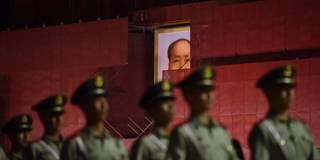Despite the Communist Party of China's best efforts to whitewash history, the Tiananmen Square massacre of June 3-4, 1989, continues to have a lasting impact on the country's political development. Sadly, after 30 years, the country now has the regime that those responsible for the massacre always wanted.
WASHINGTON, DC – China’s progress toward an open society ended when the People’s Liberation Army (PLA) slaughtered at least hundreds, if not thousands, of peaceful demonstrators in and around Beijing’s Tiananmen Square on June 3-4, 1989. The crackdown left a lasting stain on the ruling Communist Party of China (CPC), despite the regime’s unrelenting efforts to whitewash history and suppress collective memory.
Three decades later, the consequences of the CPC’s decision to crush the protest have become even harder to escape. Looking back, it is clear that the tragedy altered the course of Chinese history decisively, foreclosing the possibility of a gradual and peaceful transition to a more liberal and democratic political order.
It is worth remembering that the decade before the Tiananmen massacre was filled with a sense of possibility. China had a choice. It could revert to the more orthodox Stalinist – but not Maoist – model that had prevailed in the 1950s, a path favored by the regime’s conservatives. It could embrace gradual reforms to develop a market economy, the rule of law, and a more open political process, as moderate liberals wanted. Or it could emulate Taiwan and South Korea’s neo-authoritarian model by modernizing the economy under one-party rule, as Deng Xiaoping had long advocated.

WASHINGTON, DC – China’s progress toward an open society ended when the People’s Liberation Army (PLA) slaughtered at least hundreds, if not thousands, of peaceful demonstrators in and around Beijing’s Tiananmen Square on June 3-4, 1989. The crackdown left a lasting stain on the ruling Communist Party of China (CPC), despite the regime’s unrelenting efforts to whitewash history and suppress collective memory.
Three decades later, the consequences of the CPC’s decision to crush the protest have become even harder to escape. Looking back, it is clear that the tragedy altered the course of Chinese history decisively, foreclosing the possibility of a gradual and peaceful transition to a more liberal and democratic political order.
It is worth remembering that the decade before the Tiananmen massacre was filled with a sense of possibility. China had a choice. It could revert to the more orthodox Stalinist – but not Maoist – model that had prevailed in the 1950s, a path favored by the regime’s conservatives. It could embrace gradual reforms to develop a market economy, the rule of law, and a more open political process, as moderate liberals wanted. Or it could emulate Taiwan and South Korea’s neo-authoritarian model by modernizing the economy under one-party rule, as Deng Xiaoping had long advocated.